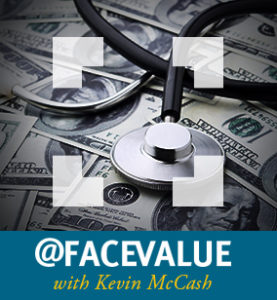Drama with a Capital D
 Television ruins everything. Well maybe ruin is a strong word but at the very least, it skews our state of mind. TV shows are written these days to draw us in and keep us coming back like some sort of visual drug dealer. It’s how networks get advertising dollars and why taking screen time away from my five year old turns everything into a mini-apocalypse. Television dramas are one of the worst offenders probably after those IQ lowering reality shows that leave you feeling like you need a day long shower after you binge watch a whole season. But the worst offenders of all may be medical dramas, the true cake-takers when it comes to giving viewers the wrong impressions.
Television ruins everything. Well maybe ruin is a strong word but at the very least, it skews our state of mind. TV shows are written these days to draw us in and keep us coming back like some sort of visual drug dealer. It’s how networks get advertising dollars and why taking screen time away from my five year old turns everything into a mini-apocalypse. Television dramas are one of the worst offenders probably after those IQ lowering reality shows that leave you feeling like you need a day long shower after you binge watch a whole season. But the worst offenders of all may be medical dramas, the true cake-takers when it comes to giving viewers the wrong impressions.
If you take television’s perspective, hospitals are these super high-tech places where everyone knows everyone else and patients end up having the worst possible version of their condition. They show doctors, nurses, and patients all having intimate relationships (sometimes VERY intimate) with each other. Usually the brilliant staff is able to use their amazing medical knowledge and futuristic equipment and techniques to save the day and cure everyone in what seems like a day or two. It almost never fails that after some trials and tribulations, someone gets a bright idea and the episode ends with smiling faces and family hugs. In the sad episodes, someone passes in spite of all the doctor’s efforts and there is some sort of dramatic lesson for the protagonist(s) as a result. Drama at its finest with a capital “D”.
What you (almost) never see is the reality of hospitals. Which is fine because honestly no one would want to watch that show. In real-life, hospitals are probably filled with drama, but of the day-to-day variety. Sadly, or not depending on your viewpoint I suppose, it is the real world that we live in. This is a world where not everyone has the best outcomes from their stays, where recurring visits are commonplace and you can almost guarantee there is a wait to get into MRI room. We live in a country where which hospital you go to can have a profound effect on the quality of care you receive during your stay and the eventual outcome after you have left. This is a world of quality measures.
I know, I know, I just flipped the switch to Boringville, USA… population me. Before you run off and start streaming the latest episode of whatever, stay with me for just a bit. Quality measures are important. A long time ago I spoke about how quality is measured is SUPER critical to how value-based healthcare will be leveraged. Hospitals treat conditions from infectious disease, physical injuries, and chronic genetic conditions all the way to mental health and age-related conditions. So how in blazes are you supposed to combine all of that together to know the difference between a “good” hospital and an “outstanding” one? Say it with me. Quality measures.

The Centers for Medicaid and Medicare Services (CMS to their friends) has an initiative called Hospital Compare that uses 100 different reporting measures in combination to create a star rating for hospitals. They break down 50-something different data points collected over time in 7 categories to assess the overall quality of a hospital. You are probably thinking to yourself that you don’t know why you are still reading this and that you would very much like to know what happened to Dr. What’s-His-Face and Dr. What’s-Her-Name in the elevator instead. I promise my point is almost made.
CMS has been running this initiative since the mid-2000’s and after all this time they have been settled on a way to combine them together to make an assessment of quality. While this might seem like a mundane monument in Boringville, it’s actually a pretty big deal. Making these kinds of assessments and drawing conclusions from them is a HUGE step in creating what would eventually be a very complex suite of metrics designed to do nothing more than define whether a particular provider(or in this case a hospital) is doing a “good job” or not.
Despite being a way for CMS to give out their version of high fives, gold stars, and participation ribbons these metrics are paving the way for more robust payment incentives and will eventually help to create a system that can be leveraged across the payer population. Why is it a big deal? Well if there are tested and industry assessed standards in place for these types of measures, it becomes easier to find common ground.
But, getting people to agree on things is hard. Just take a look at that group of teenagers trying to figure which appetizer to get at a restaurant. Getting people to agree on things that can have billion dollar effects on costs is even more of a challenge. You know what’s not hard? Hitting play on your favorite streaming service. So go ahead and do it now, just don’t tell me what happens. I’m still a season behind. Just don’t expect someone as perfect as Dr. What’s-His-Name to show up the next time you have to make a visit to the ER.






